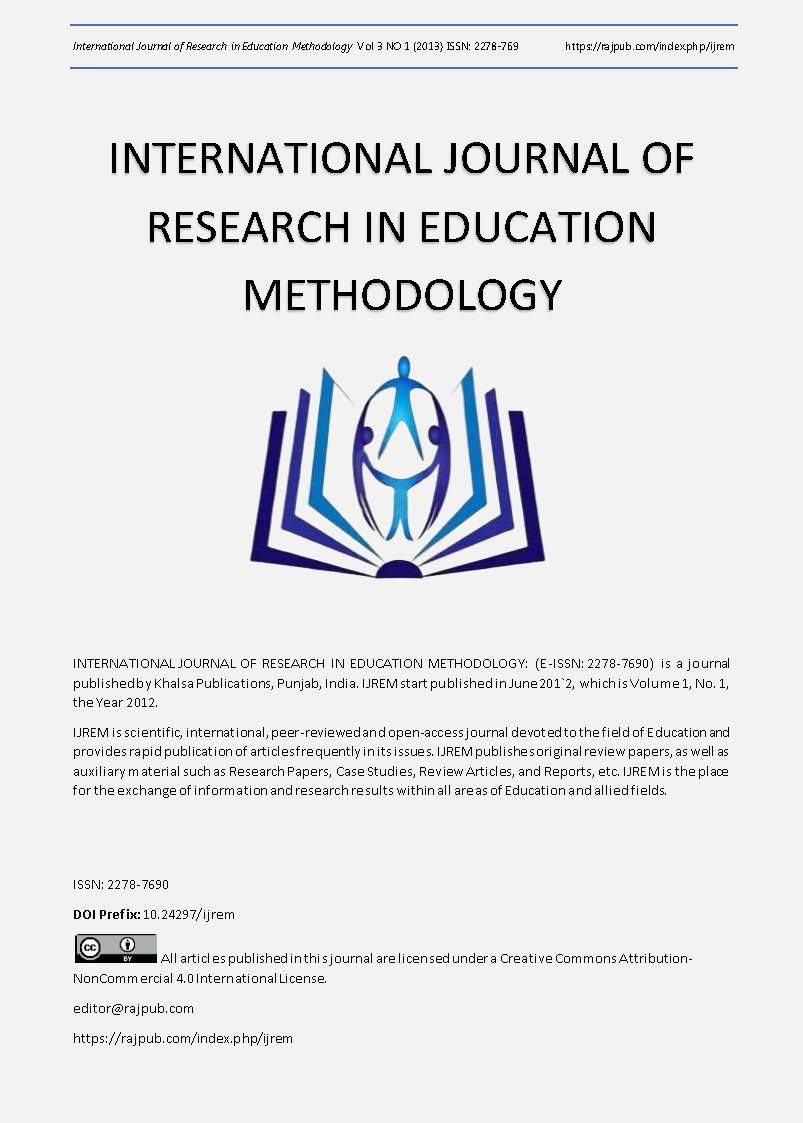EFFECTIVENESS OF LIFE SKILL EDUCATION ON ADOLESCENTS
DOI:
https://doi.org/10.24297/ijrem.v3i1.3962Abstract
Life skills" are defined as psychosocial abilities for adaptive and positive behavior that enable individuals to deal effectively with the demands and challenges of everyday life. They are loosely grouped into three broad categories of skills: cognitive skills for analyzing and using information, personal skills for developing personal agency and managing oneself, and inter-personal skills for communicating and interacting effectively with others. Life skills are problem solving behavior used appropriately and responsibly in management of personal affairs. Life skills may be learnt by teaching or simply by personal experience. Actually no life skill is used alone, there's always a combination of more than one. To broadly classify, according to UNICEF, major life skills include problem solving skills, decision making skills, creative thinking, effective communication skills, interpersonal relations skills, empathy, self awareness, coping with stress and coping with emotions. The present research is based on Effectiveness of Life skills education on adolescents. A list of 200 students from schools providing life skills training and 200 students from schools not providing life skills training between age group 14-16 years were taken as a sample and few standardized tests in form of questionnaires on life skills were conducted.
Downloads
Downloads
Published
How to Cite
Issue
Section
License
 All articles published in Journal of Advances in Linguistics are licensed under a Creative Commons Attribution 4.0 International License.
All articles published in Journal of Advances in Linguistics are licensed under a Creative Commons Attribution 4.0 International License.








